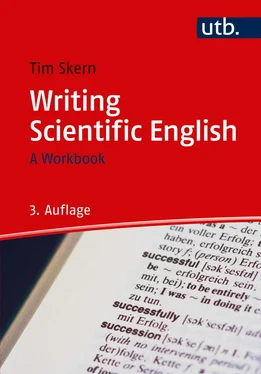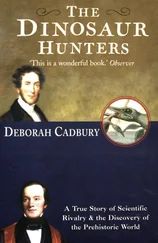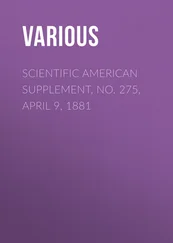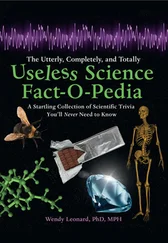Chapter 1 Chapter 1An introduction to scientific English It is well-known that, in grammatical terms, languages are more perfect the older they are and that they always become gradually worse, from high Sanskrit down to English jargon, this patchwork cloak of thoughts stitched together from rags of heterogeneous material. (Bekanntlich sind die Sprachen, namentlich in grammatischer Hinsicht, desto vollkommener, je älter sie sind, und werden stufenweise immer schlechter – vom hohen Sanskrit an bis zum englischen Jargon herab, diesem aus Lappen heterogener Stoffe zusammengeflickten Gedankenkleide.) ARTHUR SCHOPENHAUER The chapter begins by looking at the advantages and disadvantages of English as the language of scientific communication, presents some guidelines on how to write the formal English found in scientific writing and ends by suggesting a basic vocabulary for written scientific communication.
An introduction to scientific English Chapter 1An introduction to scientific English It is well-known that, in grammatical terms, languages are more perfect the older they are and that they always become gradually worse, from high Sanskrit down to English jargon, this patchwork cloak of thoughts stitched together from rags of heterogeneous material. (Bekanntlich sind die Sprachen, namentlich in grammatischer Hinsicht, desto vollkommener, je älter sie sind, und werden stufenweise immer schlechter – vom hohen Sanskrit an bis zum englischen Jargon herab, diesem aus Lappen heterogener Stoffe zusammengeflickten Gedankenkleide.) ARTHUR SCHOPENHAUER The chapter begins by looking at the advantages and disadvantages of English as the language of scientific communication, presents some guidelines on how to write the formal English found in scientific writing and ends by suggesting a basic vocabulary for written scientific communication.
1.1 Advantages and disadvantages of English
1.1.1 British or American?
1.2 Formal English, the language of science
1.2.1 Complete sentences
1.2.2 Punctuation marks
1.2.3 Write out all verb forms
1.2.4 Avoid starting sentences with “and”, “but”, “because” or “so”
1.2.5 Avoid ending sentences with “too”, “also”, “though” or “yet”
1.2.6 Avoid “get”
1.2.7 Avoid vagueness, sensationalism and exaggeration
1.2.8 Using “the” and “a”
1.3 Words for writing scientific English
1.4 Take-home messages from Chapter 1
1.5 References
1.6 Improvements to exercises
Chapter 2
Writing clear scientific English
2.1 Eight guidelines for improving your writing technique
2.1.1 Make a plan
2.1.2 Use a clean and legible layout
2.1.3 Use paragraphs
2.1.4 Write simple sentences
2.1.5 Write positive sentences
2.1.6 Write active sentences
2.1.7 Omit needless words
2.1.8 Read and think about your work
2.2 Just to make you feel better
2.3 Take-home messages from Chapter 2
2.4 References
2.5 Improvements to exercises
Chapter 3
Applying the fundamentals
3.1 Summarising the text “Fighting for Breath”
3.2 Improving four summaries of “Fighting for Breath”
3.3 Writing abstracts for scientific presentations
3.4 Improving four abstracts
3.5 What is science?
3.6 Improving four texts on “What is science?”
3.7 The five most common commands and comments from improved texts in Chapter 3
3.8 Take-home messages from Chapter 3
3.9 References
Chapter 4
Constructing a scientific manuscript
4.1 The process of publishing original data in a scientific manuscript
4.2 Planning a scientific manuscript
4.3 Writing a scientific manuscript
4.3.1 Prepare the figures and tables
4.3.2 Describe the figures and tables
4.3.3 Write a first draft of the “results”
4.3.4 Write a first draft of the “discussion”
4.3.5 What about writing a combined section entitled “results and discussion”?
4.3.6 Write a first draft of the “introduction”
4.3.7 Write a first draft of the “title”, the “abstract” and the “keywords”
4.3.8 Write a first draft of “materials and methods”
4.3.9 List and sort the references
4.3.10 Write the “acknowledgements”
4.3.11 Write the “abbreviations”
4.4 Assembling and improving the model manuscript
4.4.1 First draft of the model manuscript
4.5 Editing and refining a scientific manuscript
4.5.1 Improved model manuscript
4.6 Take-home messages from Chapter 4
4.7 References
Chapter 5
Practising writing and improving scientific manuscripts
5.1 Improving the quality of bread
5.2 Your views on human activity and global warming
5.3 Measuring biodiversity
5.4 Stereotypic Man
5.5 Searching for the best firewood to reduce global warming
5.6 Is there a connection between eating organic food and cigarette smoking?
5.7 The six most common commands and comments from improved texts in Chapter 5
5.8 Take-home messages from Chapter 5
5.8 References
Chapter 6
Easing the pain: writing whilst researching
Chapter 7
On your own
7.1 Resources
7.2 The comments that I use to correct texts in my course
7.3 A reading list to improve your vocabulary and your scientific writing
7.4 Some tips for oral presentations
7.5 References
Chapter 8
The scientific vocabulary of this book
8.1 Linking words
8.2 Words from the basic scientific lexicon
8.3 Words that extend the basic scientific lexicon
8.4 Exercises using texts from Nature and Science
8.5 References
8.6 Words that you wish to add
List of boxes
1.1 Terminating difficulties in English spelling
1.2 Fooling a spellchecker
1.3 Names of musical notes
1.4 Words for linking sentences in scientific writing
1.5 Guidelines for using “a” and “the”
1.6 Practising the use of the articles “the” and “a” in English
1.7 A basic lexicon for scientific writing
2.1 Shortening sentences by splitting them into two
2.2 Positive and negative sentences
2.3 Omit needless words!
2.4 Vocabulary of “A word in your ear” (Campbell, 1998)
3.1 Summarise the text “Fighting for breath”
3.2 Identifying problems in written work
3.3 Who takes part in a clinical study or trial?
3.4 „What is science?“ Answer this question in less than 300 words
3.5 Scientists on science
3.6 Using the words „prove“ and „disprove“
4.1 The steps in constructing and publishing a scientific manuscript
4.2 What is an impact factor and how is it calculated?
4.3 Sections of a scientific manuscript and the information they contain
4.4 A manuscript without sections
4.5 Suggested order for planning and writing the sections of a scientific manuscript
4.6 Figures 1 and 2 for the model manuscript
4.7 Figure legends
4.8 Results
4.9 Arranging the figures, figure legends and results for cohesive writing 108
4.10 Discussion
4.11 Results and discussion
4.12 Introduction
4.13 Two versions of the abstract
4.14 Title and keywords
4.15 Materials and methods
5.1 Stereotypic man
5.2 Number, amount, volume and concentration
6.1 Explaining an experimental problem to a colleague
7.1 Words from Shakespeare for use in scientific writing
7.2 My current thirty-three comments for correcting texts
Chapter 1An introduction to scientific English
It is well-known that, in grammatical terms, languages are more perfect the older they are and that they always become gradually worse, from high Sanskrit down to English jargon, this patchwork cloak of thoughts stitched together from rags of heterogeneous material.
Читать дальше












